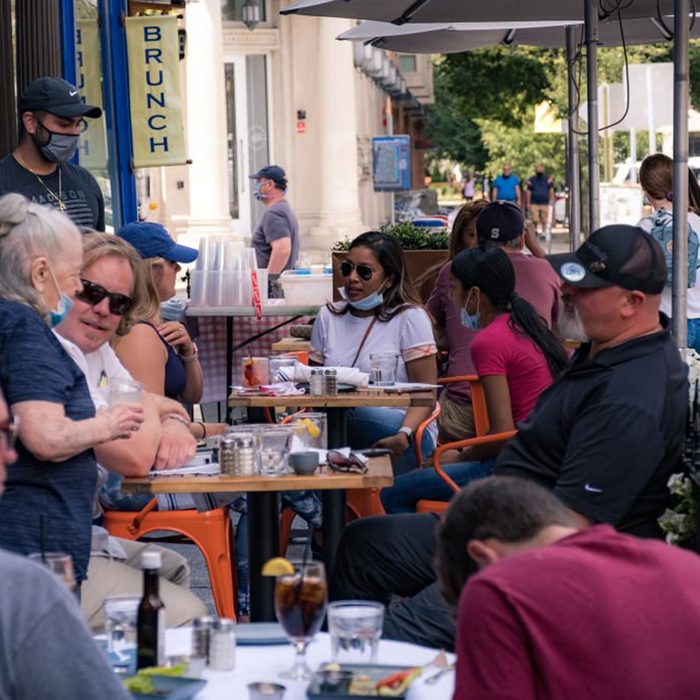
Dining in a pandemic
Going out with friends and family or for a work event in a restaurant without a care in the world has quickly become a memory of the past. After much of the world has been in lockdown for the past few months due to millions of people being infected with coronavirus, restaurants in various parts of the United States are tentatively starting to open back up. However, as businesses start opening up, the repercussions of the pandemic will be felt in the United States and around the world for a long time. If you’re thinking of going out to eat, here are a few things you should keep in mind.
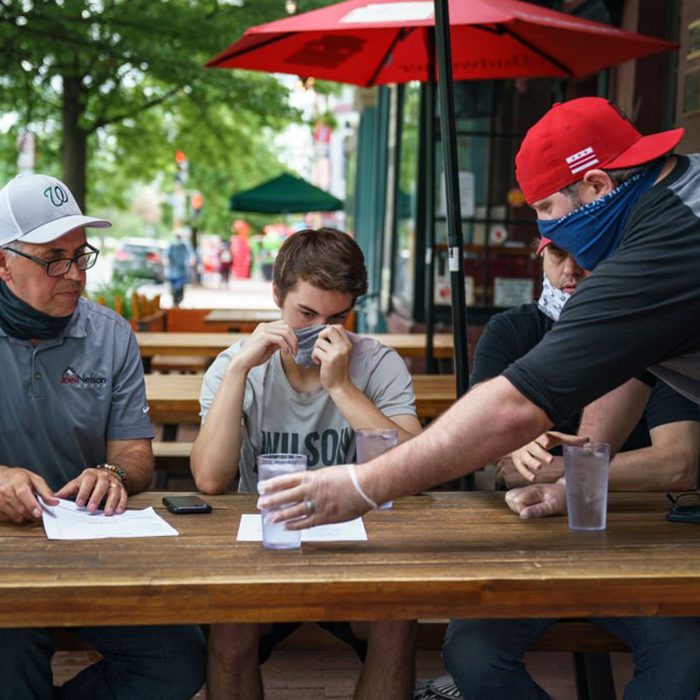
Arrive without a mask
Wearing a face covering has now become commonplace. According to a WHO-backed study, wearing a face-covering can reduce the spread of COVID-19 by 85 percent. One of the main things you shouldn’t do when going to a reopened restaurant is to arrive without a mask. “According to the CDC, this is a very important layer of defense when trying to not contract the disease,” Brian Hinshaw, the Senior VP of Food & Beverage at Cameron Mitchell Restaurants, tells our sister site, Reader’s Digest.
But how do you handle eating while wearing a face mask? Hinshaw recommends wearing your face covering when you enter a restaurant or are in outdoor seating like a patio and then to remove the mask when you begin to eat. When you go back to your favorite restaurant, it may look a bit different from your memories.

Ignore individual restaurant guidelines
While most restaurants will follow the same guidelines, specific restaurants may have certain parameters in place that you, as a guest, should respect and follow. “Upon your arrival, if the restaurant wants to take your temperature or requires you to use hand sanitizer upon entry, allow this to happen,” Bridget Sweet, Executive Director of Food Safety, College of Food Innovation & Technology, Johnson & Wales University, tells Reader’s Digest. “Restaurants are trying to protect you as well as their staff. If the establishment requests that you wait in your vehicle until your table is ready, do so.” If at this point in time you’d rather order takeout as opposed to going into a restaurant, here’s how you can safely enjoy takeout during the pandemic.
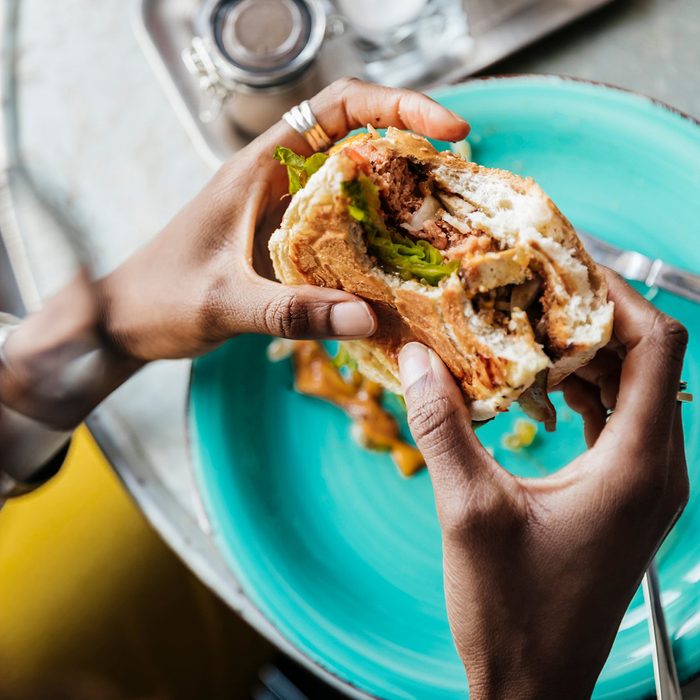
Eat with your hands
If you’re dreaming of eating a hamburger with your hands or eating finger foods like mozzarella sticks or chips and salsa, you might need to savor that experience at home and not in a restaurant. “The worst mistake you can make is eating with your hands. We inadvertently touch so many things at a restaurant, such as menus, glasses, silverware, condiment containers, etc,” Dr. Gary Linkov, an ENT physician and facial reconstructive surgeon in New York City. “If you do happen to touch an item at the restaurant which has been contaminated with coronavirus, bringing your hands to your face increases your risk of acquiring infection.” Make sure you know how to wash your hands the right way.
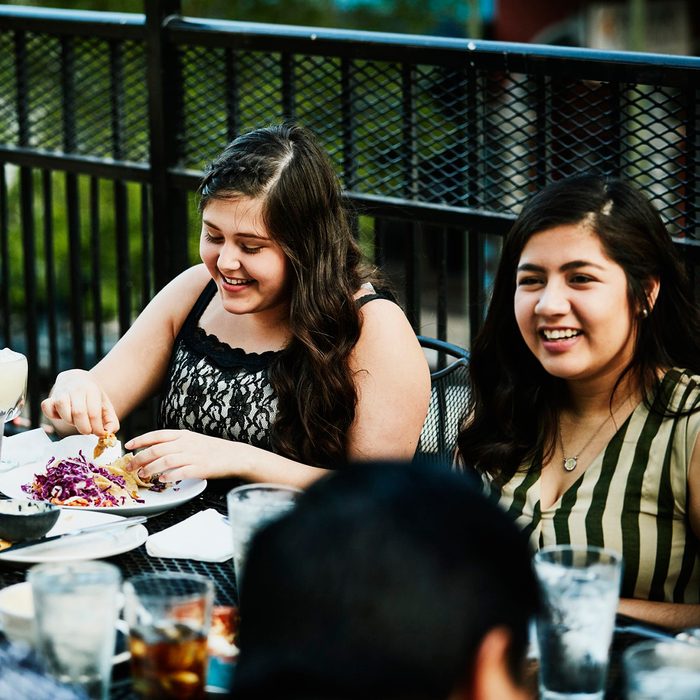
Eat with a large group of people
Even though you’re in a restaurant, you should still maintain social distancing as much as possible. “I also do not advise going out to eat with a large group of people, as may lead to people leaning over the table in order to communicate, resulting in the spread of respiratory droplets among close contacts,” says Dr. Linkov. Here’s what kills bacteria, and what doesn’t.
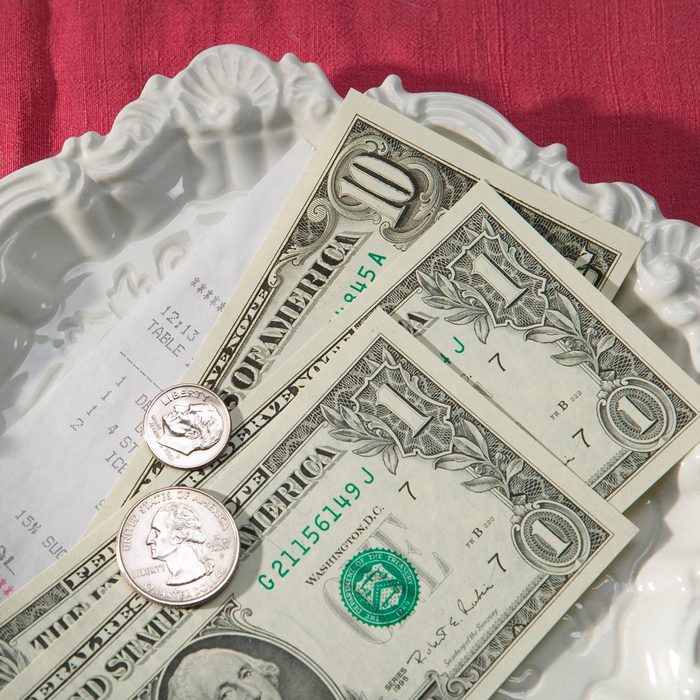
Pay with cash
Opening up your wallet and paying the bill with cash might seem second-nature, but in a pandemic, it’s important to limit the spread of germs and pay with card to minimize contact. Cash itself houses a lot of germs, and if you forget to wash your hands after touching money, this will convince you to stop. But paying with cash (or not paying with cash) brings up a good question: Should people stop paying with cash in a post-COVID-19 world?
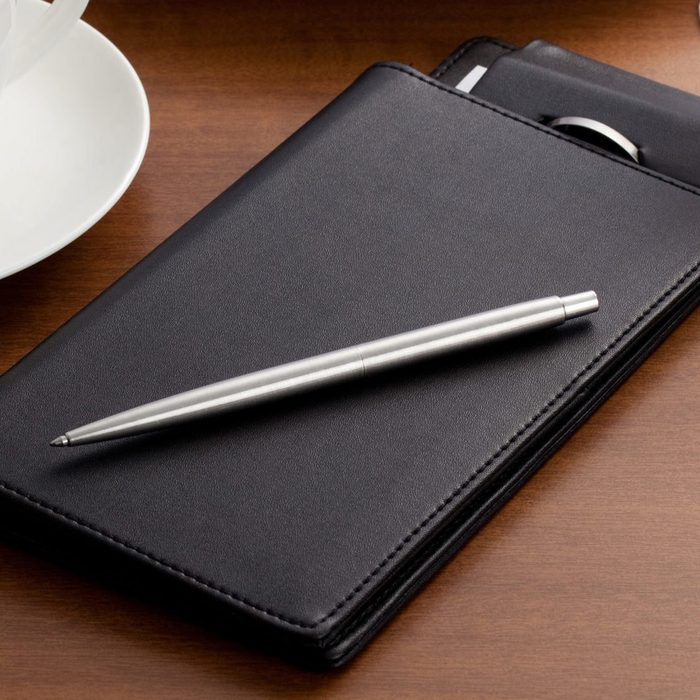
Use the restaurant pen
Remember the days of signing the receipt with the pen the waiter brought for you, and then lending that pen to a friend who didn’t bring their own? We do, too. However, looking back, sharing pens with friends, your waiter, and who knows how many other patrons may not have been the most hygienic idea. Check out a few other dos and don’ts for avoiding germs at restaurants.

Use of door handles
You’re probably aware of everything restaurant staff is cleaning like countertops, but what about things people use more often than not, like door handles? “The things to be most mindful of are the areas that restaurants do not have much control over on a minute by minute basis so unless a restaurant is physically keeping their door open or has someone opening the door, be mindful of the door handle,” Taylor Smith, founder of CJS Global, a leading restaurant sanitation company.
“A reminder of this for public restroom doors as well.” Smith adds that if using door handles is unavoidable, then you should always wash your hands or sanitize your hands after touching.
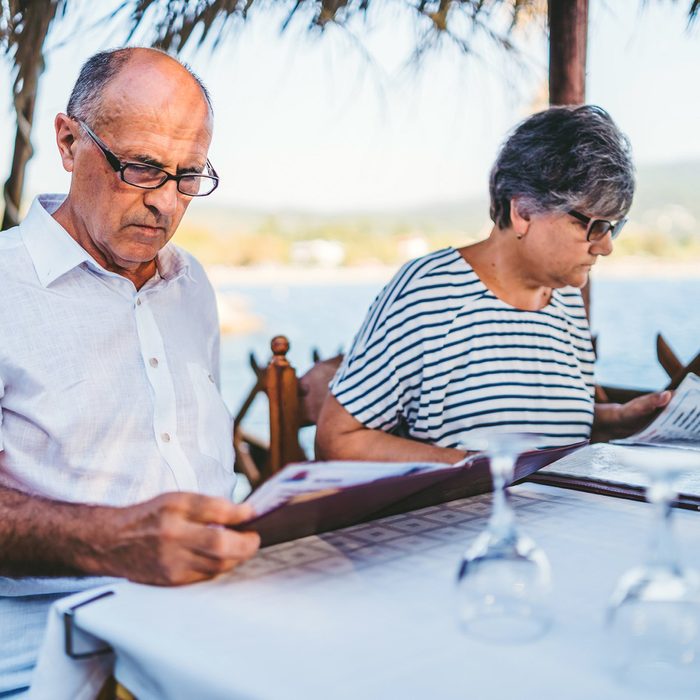
Request a physical restaurant menu
Instead of asking or expecting a physical menu to look at when dining in a restaurant, you should look up the menu online beforehand. If that’s not possible, then look for a disposable menu. The National Restaurant Association, in its COVID-19 reopening guide for the restaurant industry, recommends restaurants “Avoid sharing items such as menus, condiments and food orders. Use disposable or digital menus; toss disposable menus after each use.”

Remain quiet if you’re uncomfortable
While restaurants are taking all the precautions that they can, this is still an uncertain time for everyone. “If staff seats you too close to others, or close to someone who is coughing or sneezing, then don’t be shy about asking to be moved,” Lynell Ross, founder and managing editor of Zivadream, an education advocacy website. “Out of concern for your safety and others, politely asked to be moved to a table somewhere else in the restaurant or even outside. Experts are finding that droplets can spread farther than six feet when someone is coughing or sneezing.”
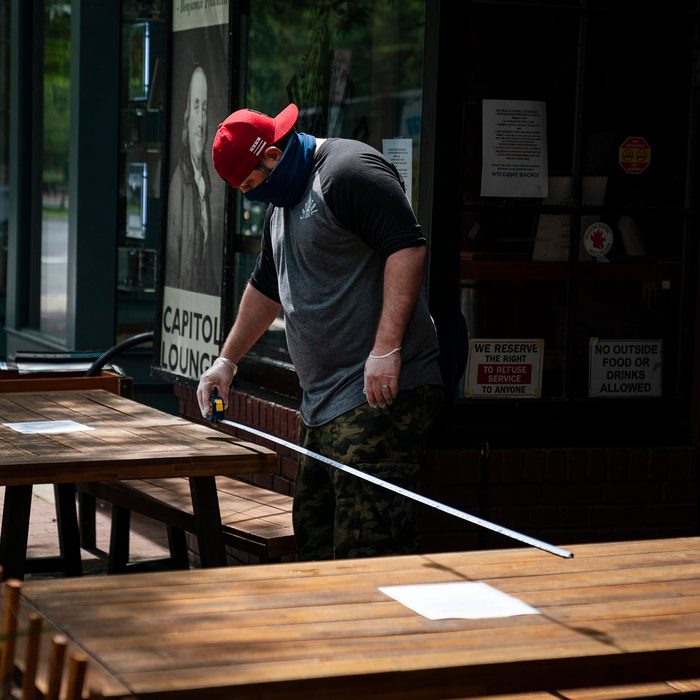
Move chairs and tables without permission
It might be tempting to scoot a table over a foot or move a chair from its rightful place, but you shouldn’t do that. “Do not move tables or chairs without asking a manager or person in charge,” says Hinshaw. If you’re that uncomfortable, bring it up with your waiter or manager, since there are guidelines in place that you, as a guest, may not even know about. “There are strict floor plans for social distancing guests in a restaurant that affect licensing,” Hinshaw adds. Also, many restaurant owners have put in a lot of time and money into making sure you as the guest are comfortable.
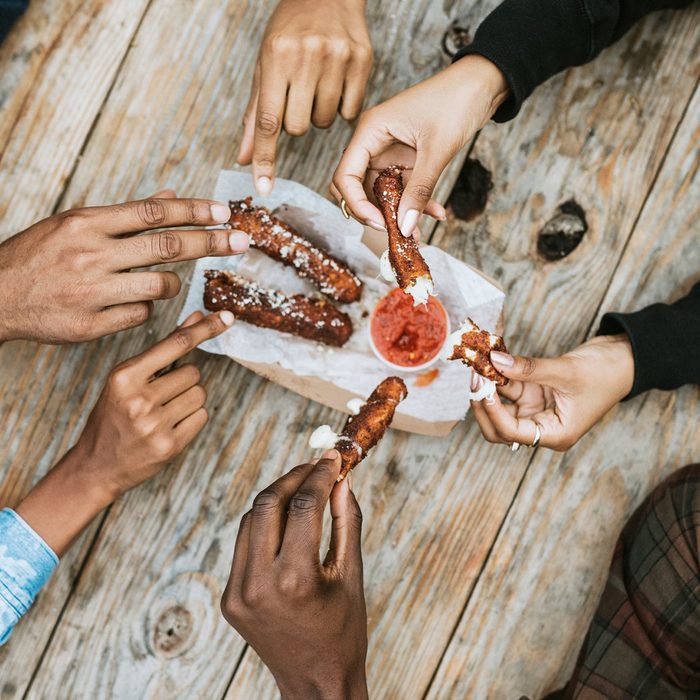
Share food
Communal appetizers and split desserts may become a thing of the past during the current coronavirus pandemic. “While it can be fun to take a sip of someone’s drink or milkshake or sample a bite of someone else’s meal, that should be avoided now,” says Ross. Since people infected with COVID-19 can be asymptomatic, or not show any symptoms, it’s important to be mindful of who you’re sharing food with. It should go without saying that there are still risks in dining out and if you’re feeling under the weather, stay home.
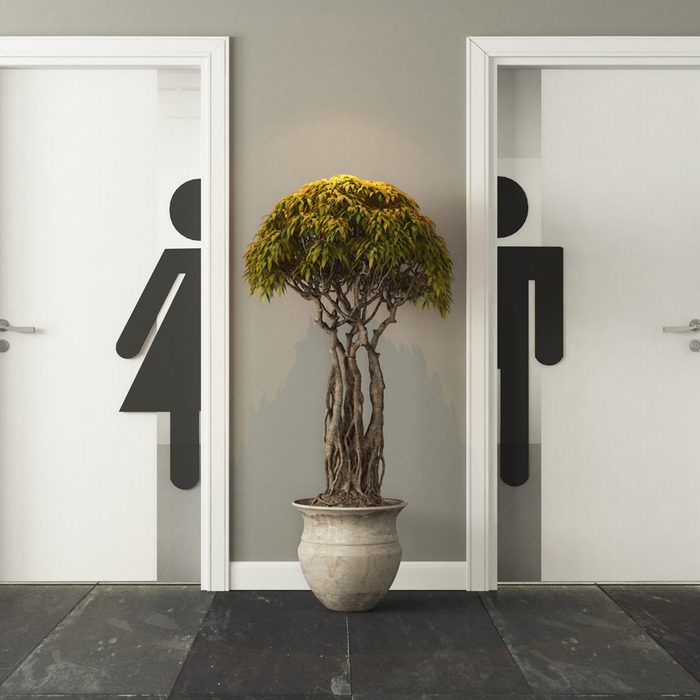
Use the bathroom
Or, at least, if you do think twice about it. According to the New York Times, a recent study published in the journal Physics of Fluids revealed that after a toilet is flushed aerosol droplets are spread about three feet in the air, creating a “toilet plume.” What’s even grosser? Coronavirus particles can be found in those aerosol droplets. Will we live in a world where you will avoid every public restroom you see? Not likely. But it’s best to keep your wits (and bladder) in check.
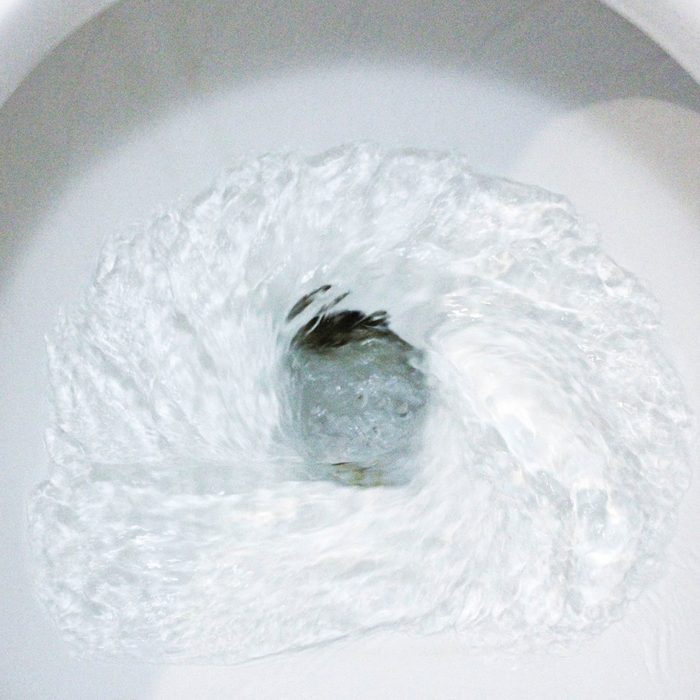
If you do use the bathroom, don’t flush with your foot
OK, so you couldn’t hold it in any longer and had to use the restaurant bathroom. But how do you go to the bathroom without, well, touching anything? For starters, avoid flushing the toilet with your foot. “Unless you can maneuver opening stall doors without using your hands, you’re more than likely leaving the stall with dirty paws anyways. Flushing the toilet with your foot only assists in transferring fecal matter and urine from the floor to the handle,” Glenn Gallas, vice president of operations for Mr. Rooter Plumbing, a Neighborly company tells Reader’s Digest. “Instead, use toilet tissue to push the toilet handle, wash your hands with soap and water and use a paper towel to hold the door on your way out.”
